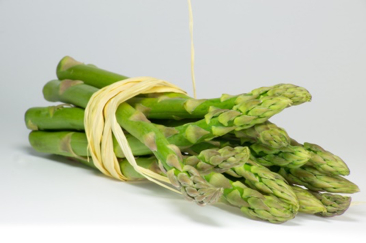LOCAL IN-SEASON FOODS REALLY DO TASTE BETTER
 Have you been to the grocery store lately and noticed the colorful assortment of fresh fruits and vegetables which seem more plentiful and more cost effective than from a few short weeks or months ago?
Have you been to the grocery store lately and noticed the colorful assortment of fresh fruits and vegetables which seem more plentiful and more cost effective than from a few short weeks or months ago?
People used to adapt their diets to eat what was available at a particular time of year in their particular location. That is what we today refer to as eating seasonally and locally. These days because of the big box stores and large grocery chains people are able to buy produce from almost anywhere at almost any time of the year. Although you may notice certain items costing more or even possibly not looking as fresh, you are still able to get foods out of their natural growing season for your area.
One benefit of eating in-season fruits and vegetables is that they are harvested at the peak of freshness and loaded with the vitamins and nutrients essential to support our bodies. Eating these foods helps the body stay in sync with nature. It is also better for your health, the environment, and the economy to eat foods in season.
Purchasing produce which is imported from far away and out of the local season means it has to be transported and stored longer than it was meant to be. These fruits and veggies are usually harvested before they are ripe to avoid them spoiling before they make it to the stores. In some cases they are even coated with preservatives to make them last longer.
Buying foods frozen when they are at their peak is a great way to have some of the bountiful fruits and vegetables during off-seasons in your area. These foods are able to retain their vitamins and minerals. I love places like Trader Joe’s and Whole Foods markets where they have an array of organic produce chopped and in natural juices (instead of sugary syrups). They are often less expensive than their out-of-season counterparts shipped from far away. These frozen foods are ideal for simple meal prep and last minute dinner ideas on the fly. They are also a great way to have healthy ingredients for a smoothie or soup.
There are many ways to purchase local foods in-season besides going to your large grocery stores. In my area, for example, during late spring and through most of the fall the local Farmer’s Markets are brimming with beautiful selections of locally sourced produce. I love to be able to speak with these farmers and discuss whether they are organic farms or if they do use some sort of protection for their crops. A farmer who may not be able to spend the additional cost for an organic certification may explain that they use a particular pesticide that is not harmful when it’s applied before the plant blooms. Being able to have a conversation like this is a great way to develop trust and a greater appreciation for local farms in your area.
If you still want to eat foods grown out of season, like apples during the summer for example, then you can find them in the markets but it’s best to at least select those which are grown organically with fewer harmful preservatives or chemicals. Understanding the Environmental Working Group’s Clean 15 and Dirty Dozen list is a good start to identifying which fruits and vegetables are best to purchase organically. The EWG updates the list annually and like any rule there are exceptions, but a good rule of thumb is that if you are going to eat the peel or skin of the fruit or vegetable then it’s best to purchase it locally or organically. If there is a thick skin or peel which you would not eat, like a banana or an onion, then it is generally safe to purchase those items conventionally grown.
Becoming familiar with the PLU labels on produce will help you identify which fruits and vegetables are organic, conventional or genetically modified (GMO’s). The codes are on labels or stickers found on the foods and you will find that organically grown produce will have a 5-digit code beginning with the number 9. Conventionally grown produce will have a 4-digit code beginning with a 4 or 3 and GMO’s are labeled with a 5-digit code beginning with an 8.
There is also a very useful site where you can input your area and time of year and it gives you a list of the produce at the peak of freshness for your area. https://www.seasonalfoodguide.org/.
It is important to remember that being mindful is key when it comes to your health and wellness. It is better to eat fruits and vegetables that are frozen, packaged or out of season than to eat overly processed, sugar-laden junk foods.
Happy Summer!!
Yours In Good Health,
![]()
Wholey Fit Nutrition, LLC
www.wholeyfitnutrition.com
info@wholeyfitnutrition.com
